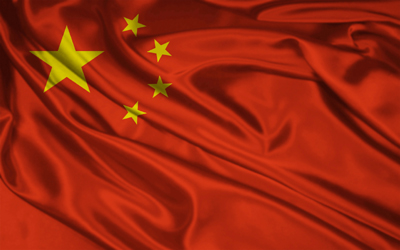 BEIJING: China's manufacturing activity strengthened in August, official figures showed Sunday, the latest data to suggest that the world's second-largest economy is picking up steam after two quarters of slower growth.
BEIJING: China's manufacturing activity strengthened in August, official figures showed Sunday, the latest data to suggest that the world's second-largest economy is picking up steam after two quarters of slower growth.
The official purchasing managers' index (PMI) rose to 51.0 last month from 50.3 in July, according to figures released by the National Bureau of Statistics (NBS).
The index tracks manufacturing activity in China's factories and workshops and is a closely watched gauge of the health of the economy. A reading below 50 indicates contraction, while anything above signals expansion.
The PMI strengthened for the second straight month and comes as other recent data has spurred optimism a slowdown in the economy may have been stemmed.
Zhao Qinghe, a statistician with the NBS, said in a report on the bureau's website that the result marked the highest this year and "shows that China's manufacturing industry as a force for economic development has strengthened to some extent and makes obvious that a return to corporate stability has quickened further".
In July, generally upbeat economic data, including a jump in industrial production to a five-month high, helped spur optimism that China's economic weakness may have hit bottom.
And British banking giant HSBC said last month that the initial reading of its PMI survey for August came in at 50.1, rebounding from an 11-month low and marking the first time since April the indicator had expanded.
HSBC is due to release its closely watched final PMI index for August on Monday.
The first half of this year saw a spike in analyst concerns about China's economy after an expected rebound from the worst growth performance in 13 years failed to materialise.
China's gross domestic product (GDP) grew 7.8 percent in 2012, the weakest result since 1999.
Growth in the first quarter of this year dipped to 7.7 percent from 7.9 percent in the final three months of last year and slowed further to 7.5 percent in the three months through June.
ANZ bank economists Liu Li-Gang and Zhou Hao said in a report that the August PMI figure shows China's "growth momentum has accelerated thanks to faster implementation of the fiscal programme and 'mini stimulus' initiated by the new government".
Authorities have been loathe to introduce large-scale stimulus measures such as the four trillion yuan ($650 billion) package thrown at the 2008-2009 global financial crisis, but in late July did announce some steps to boost growth, such as reducing taxes on small companies and encouraging railway development.
"The government has allowed extra infrastructure investments, including railway, urban infrastructure construction, and shanty town renovation", the ANZ report said, adding that would result up to about 200 billion yuan of output, estimated as equal to 0.8 percent of China's GDP in the first half of 2013.
China's leaders say they are aiming to move the economy away from dependency on big ticket investment and instead want consumer demand to become the key growth engine.
Authorities are targeting 2013 growth of 7.5 percent, which is the same as the objective set last year.
They see annual growth in the seven percent range as being more sustainable for the future as the country's economy matures. As recently as 2011 GDP grew 9.3 percent and expanded 10.4 percent in 2010.
President Xi Jinping told business leaders in April that China's days of "ultra-high speed" growth are probably over and that officials would be emphasising "quality and efficiency" in economic development.




























Comments
Comments are closed.